Welcome to another edition of Willoughby Hills!
This newsletter explores topics like history, culture, work, urbanism, transportation, travel, agriculture, self-sufficiency, and more.
My local Joann’s Fabric store is closing. So is yours. So is everybody’s.
I guess technically, they now go by JOANN. All caps, no apostrophe. Nothing after the JOANN. It looks like an acronym, with each letter standing for something else. But it doesn’t stand for anything.
But that’s not entirely true. JOANN was once Jo-Ann Fabrics, a name derived from combining the names of the founder’s daughters: Joan Zimmerman and Jacqueline Ann Rosskamm. Jo-Ann was a rebranding in 1963 from the original name, Cleveland Fabric Shop. It was a family store, with a family name.
It’s gone through a number of rebrandings over the years. After the establishment of Jo-Ann Fabrics, some stores went by the name Fabri-Centers of America. The brand also acquired similar chains over the years with names like House of Fabrics, Fabricland, Fabric King, and So-Fro Fabrics (at least if Wikipedia is to be believed).
In 1998, the company name was changed to Jo-Ann Stores, Inc and the stores were branded as Jo-Ann Fabrics.
I recall a stretch at some point where the store went by the name Jo-Ann Etc where the “Etc” wasn’t just an abbreviation for et cetera, but was actually an acronym for “Experience the Creativity.” I think the goal was to show that they sold more than just fabric.
If memory serves correctly, this rebranding happened in the late 1990s or early 2000s, that strange era where the internet existed but didn’t yet catalog everything. So while there are random Jo-Ann Etc. storefronts near me and online which prove that my memory is still somewhat in tact, I can’t find a reliable timeline of exactly how long that name was used or why it was dropped.
The “Etc” branding may have been awkward, but I admire the urge to show the breadth of products that Joann sold. Beyond just fabric and fiber, there were paints, canvases, beads, glues, picture frames, plastic flowers, and much more.
After the “Etc” era, the all capital JOANN began screaming for attention. I’m surprised they didn’t add an exclamation mark to go by JOANN!, although perhaps they learned a lesson from Jeb! Bush’s failed 2016 presidential campaign (spoiler: he lost, despite using an exclamation mark in his campaign signs).
When the final Joann (I can’t bring myself to keep capitalizing the name) closes in a few weeks, the chain will leave behind more than 800 empty locations and result in job losses for 19,000.
I’ll admit that I didn’t frequent the retailer, although there seems to have always been a location within a few miles of wherever I’ve lived for most of my life.
I recently stopped by the location in Ludlow, MA where a liquidation sale is underway to see if there were any good bargains. But I also wanted to take one last look at this entry in retail history before it joins the ranks of Toys R Us, Circuit City, Radio Shack, and Payless Shoe Source and ceases to exist.
In doing so, I began to contemplate what we will soon be losing, yes as individual crafters and creators, but also as a collective whole. Society is changing rapidly, and the end of Joann seems to say something deeper about our ability to create, to repair, and to make beauty.
Despite the hundreds of attempts over the years of trying to remind people that Joann is more than a fabric store, at their core, their primary product is still bulk fabric sold by the yard. In the Ludlow store, I would estimate that 35-40% of the sales floor is dedicated to fabric.
There were huge file cabinets in the middle of the fabric department, plus several more spinning racks, which featured patterns for all manner of outfits. Each pattern seemed to feature the option to make two or three different finished pieces using mostly the same parts.
My grandmother used to sew her own house dresses using patterns like this. She would also sew stuffed animals, toy clothes, and other little trinkets with her scrap pieces. The fabric aisle always reminds me of her.
My grandma has been gone for 8 years now, and the pattern she used for her dresses was probably purchased sometime in the 1960s or 1970s.
I don’t know who is still buying these patterns, or more importantly if people still are, how accessible they will be once Joann is gone.
Walking through the bulk fabric choices was always a highlight of a visit to Joann, even as a child. While I don’t sew, I have always been drawn more to the bright, loud cottons or fleeces that featured recognizable cartoon characters or fun shapes and colors. I always imagined learning how to use a sewing machine and making myself a pair of pajamas or a loud Hawaiian shirt, perhaps in an ironic pattern.
But as I walked the aisle recently, I noticed the fabric selection was much more extensive than I had ever imagined. There were bolts of leather that could be used to upholster a chair (well, they were probably pleather or “vegan leather” but they looked nice). There was outdoor fabric that could be used to make cushions for a chaise or an umbrella for the pool deck. There was even upholstery fabric that could be used to cover a recliner or a couch.
This was more than just fabric for clothing, and I had never even paid attention.
Joann not only sold everything needed to create new clothes out of fabric, but it also sold plenty of pieces and parts that could be used for repair too.
There was an entire aisle of zippers!
I used to think about zippers the way most people probably think of screws; how many different styles could there be? But just like there’s cabinet screws, trim head screws, stainless steel screws, drywall screws, and lag screws, just to name a few, there are seemingly an endless variety of zippers.
Zippers in different colors. Zippers of different lengths. Zippers that close in different ways.
I’m sure these can all be ordered online now, but I imagine that, like screws or nails or bolts, there’s a different feeling to holding something in your hand, looking it over, and deciding which one will work best for a project.
The same goes for buttons. There was an entire aisle just dedicated to replacement and decorative buttons, organized by color.
A pack of buttons usually sold for a dollar or two. These were not a high margin item for Joann to stock, but they were important.
Imagine having a vintage jacket, skirt, or shirt and losing a button. Browsing the button aisle could offer redemption to that piece; a chance at a new life. Or an old piece could be given a fresh new look with just a change of buttons.
With the death of the button aisle and the zipper aisle, the option to repair clothes becomes much harder. Fast fashion retailers have made our clothing seem increasingly disposable with low prices and equally low quality. Now, even well-made clothes that once may have been able to be repaired may be seen as more disposable. Because without the button aisle, what’s the alternative? Ordering a single button from Amazon?
Joann was also known for selling yarns for knitting, crocheting, and other handwork projects. When I visited, the yarn aisles were completely picked over and emptied.
As I walked the half-bare aisles of the rest of the store, I was struck by all the unique tools and supplies for projects that I didn’t even know existed.
There were tools for jewelry makers with names like pearl reamer, bead grabber, multi-strand flush wire cutter, and hole punch pliers. I have no idea what they all do or if these particular ones are high quality, but I love the idea that there are tools out there for specific artisans and that a casual browsing like I was doing might inspire somebody to start building their own jewelry. (“I have lots of pearls that need reaming. Who knew there was a pearl reamer to do the job?! I must have it!”)
There was also an entire upholstery section for rebuilding and repairing furniture. Joann is probably not the only place selling 3/8” upholstery tacks, but it was a place where these were reliably stocked.
I feel conflicted about the end of Joann. On the one hand, it operates hundreds of big box stores around the country, often of the size and format that feels impersonal and generic. Many of them are in strip malls surrounded by a sea of parking.
But, there’s something about that ubiquity that makes it accessible and approachable. It’s easy to go into Joann without any pretension and walk out with something useful.
One could argue that Joann’s demise is an opportunity for local retailers. To an extent, this may be true, although there are realistically only a handful of local stores in this space.
We have an amazing local wool store in Northampton, MA, maybe 20 minutes from the Joann that’s closing. The yarn they sell is much higher quality than anything at Joann and their staff is passionate. But stores like this are few and far between.
I’ve written before about visiting a local fiber show, and even that is only held twice per year.
In thinking about fabrics, I don’t even know of a local fabric store anywhere near me. The only one I can ever remember visiting was The Old Country Store in the heart of Amish Country in Intercourse, PA (yes, that’s the real name). It was an amazing store, catering mostly to the quilting community. But if you don’t live near Lancaster County, it’s not a great resource.
The sad reality is that the business that could be picked up by these local chains will more likely end up going to Amazon or other big online retailers.
Ultimately, I think Joann succeeded because it encouraged people to create things with their hands and to repair what they had. These are old fashioned values, ones that we should fight to preserve.
Joann wasn’t perfect (remember, JOANN?), but it was a place where people could truly indulge their creativity. As Joann closes their last stores, I hope we can continue to hold on to that impulse to make. It’s a deeply human urge, one that will surely outlive a craft store.
Thanks for reading Willoughby Hills! Subscribe for free to receive new posts and support my work.
Related Reading
If you’ve missed past issues of this newsletter, they are available to read here.





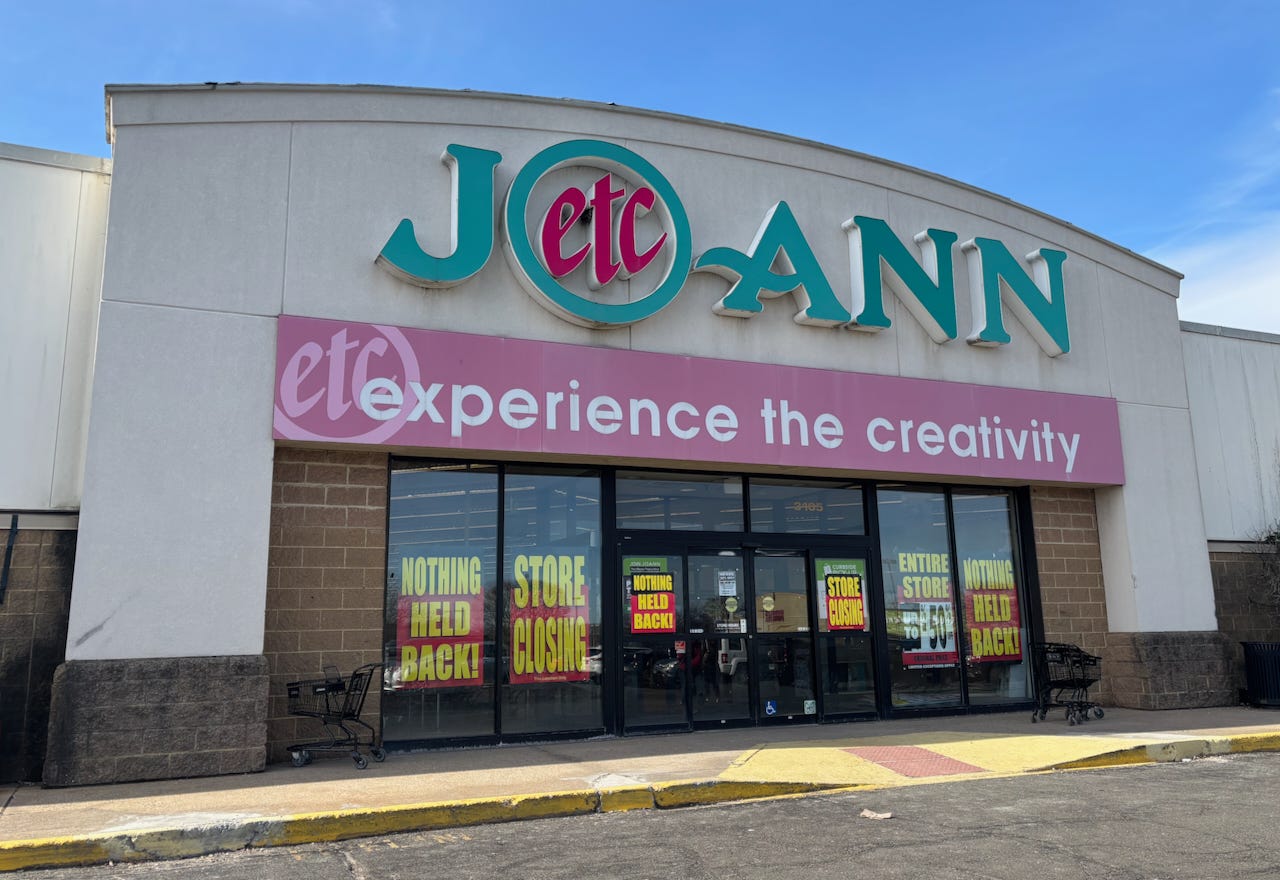
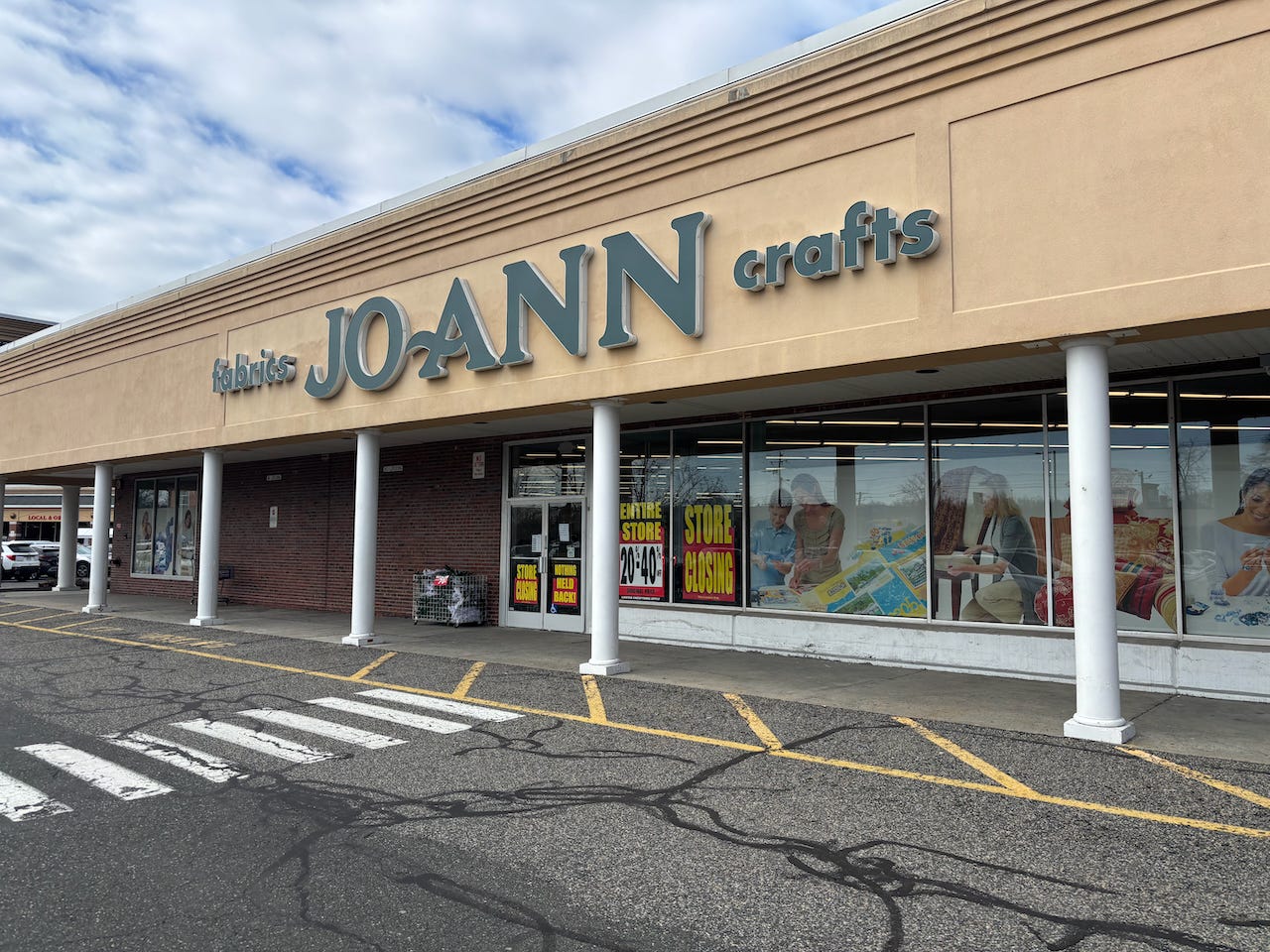
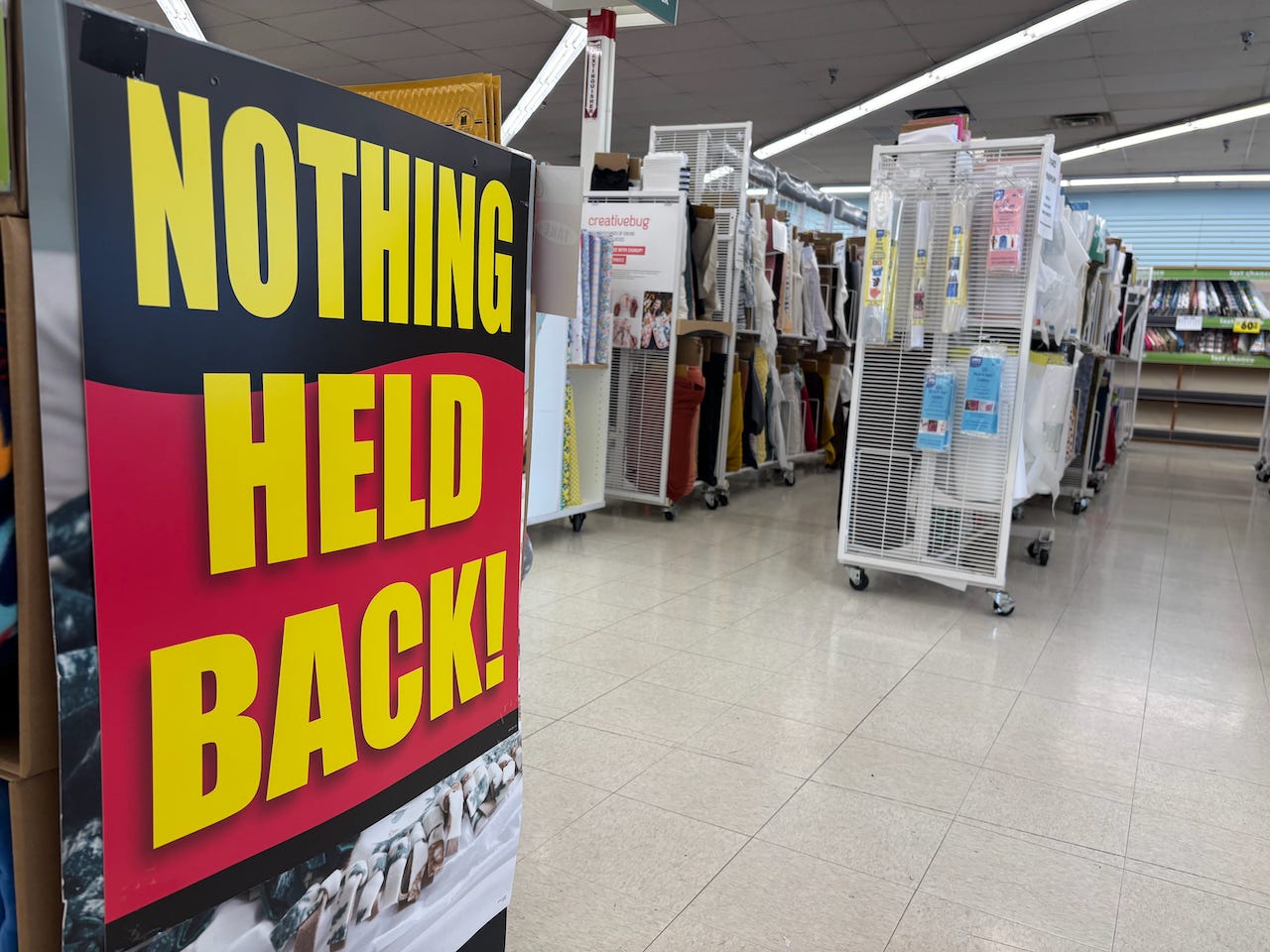
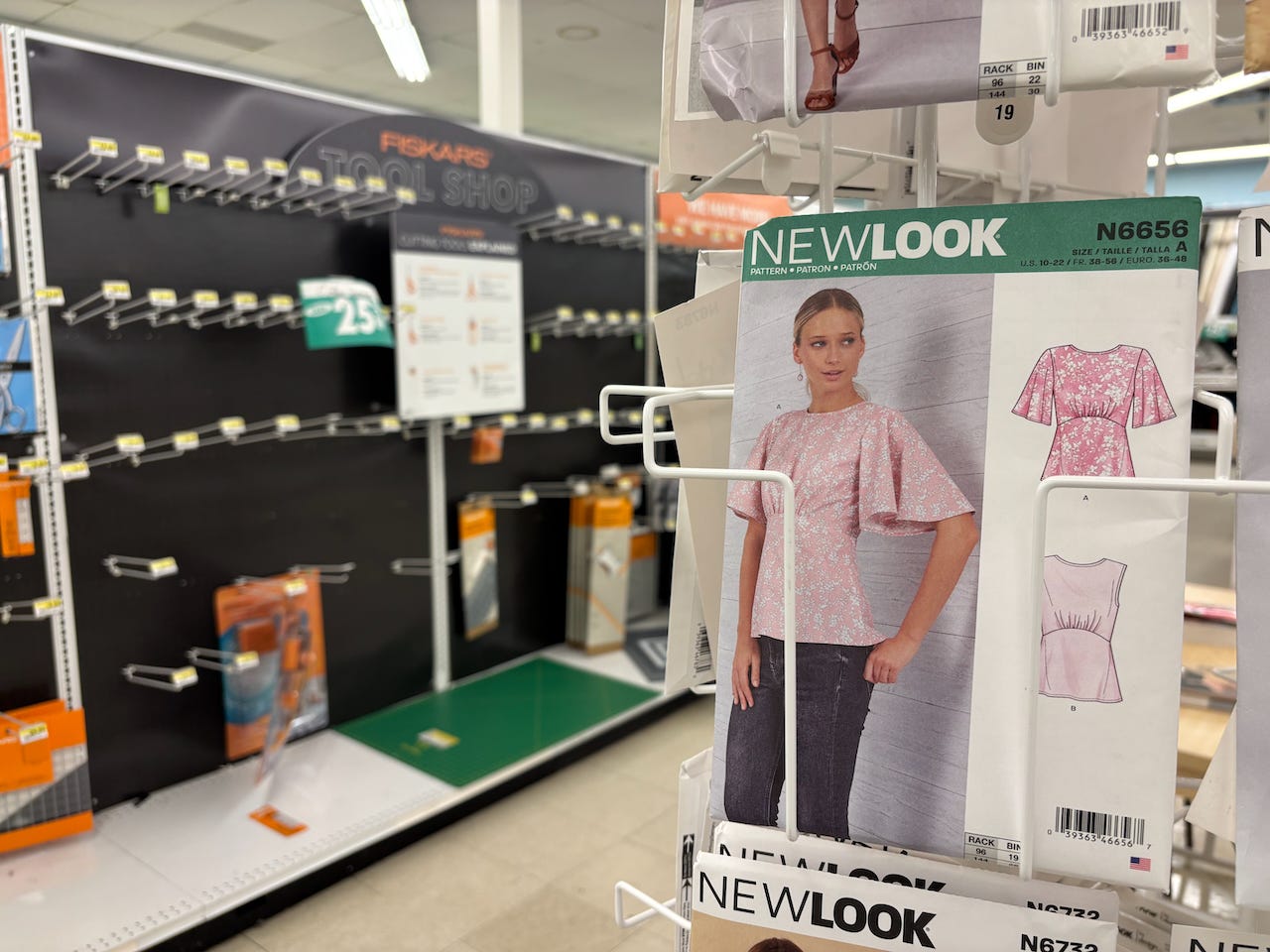
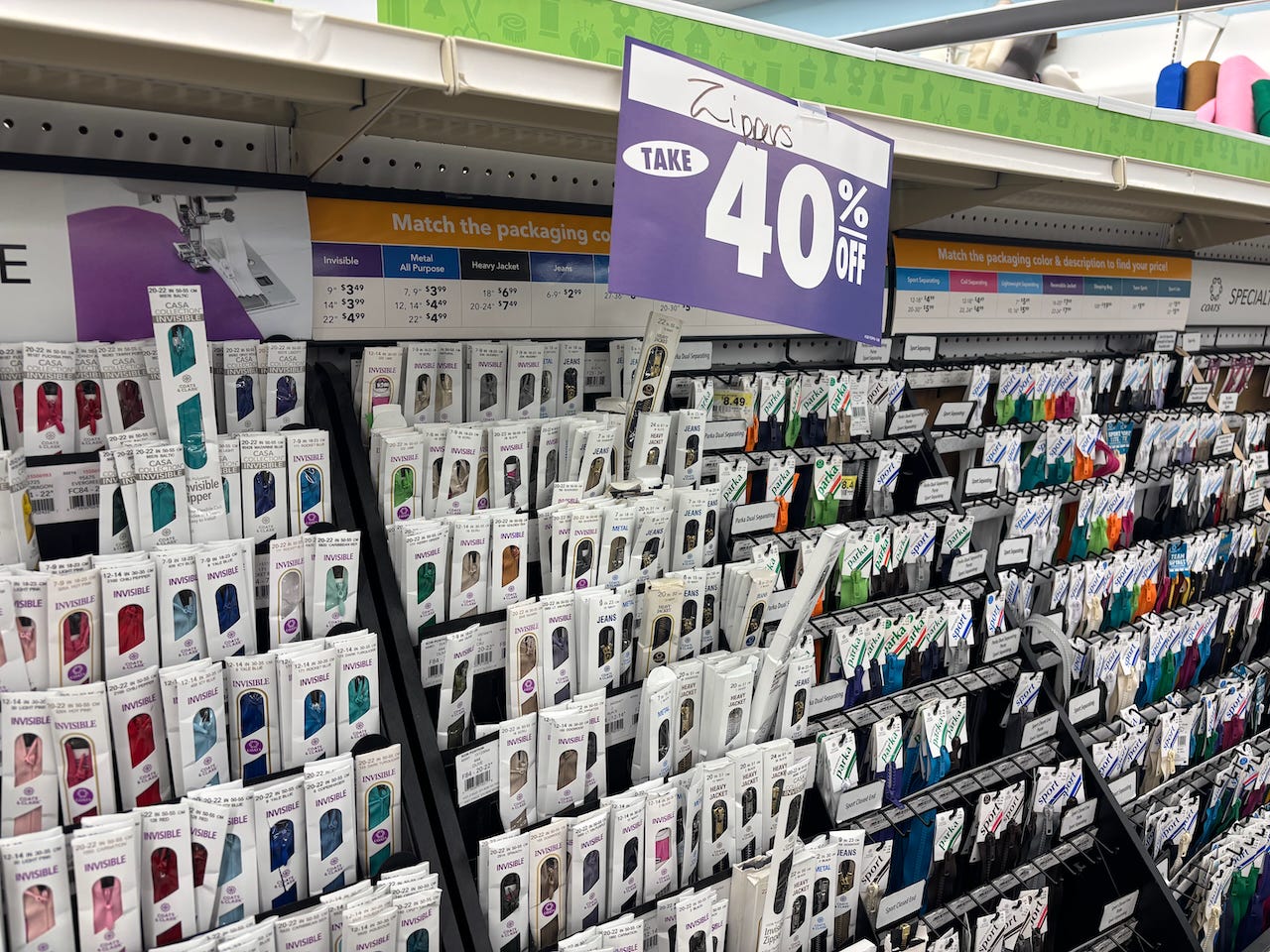
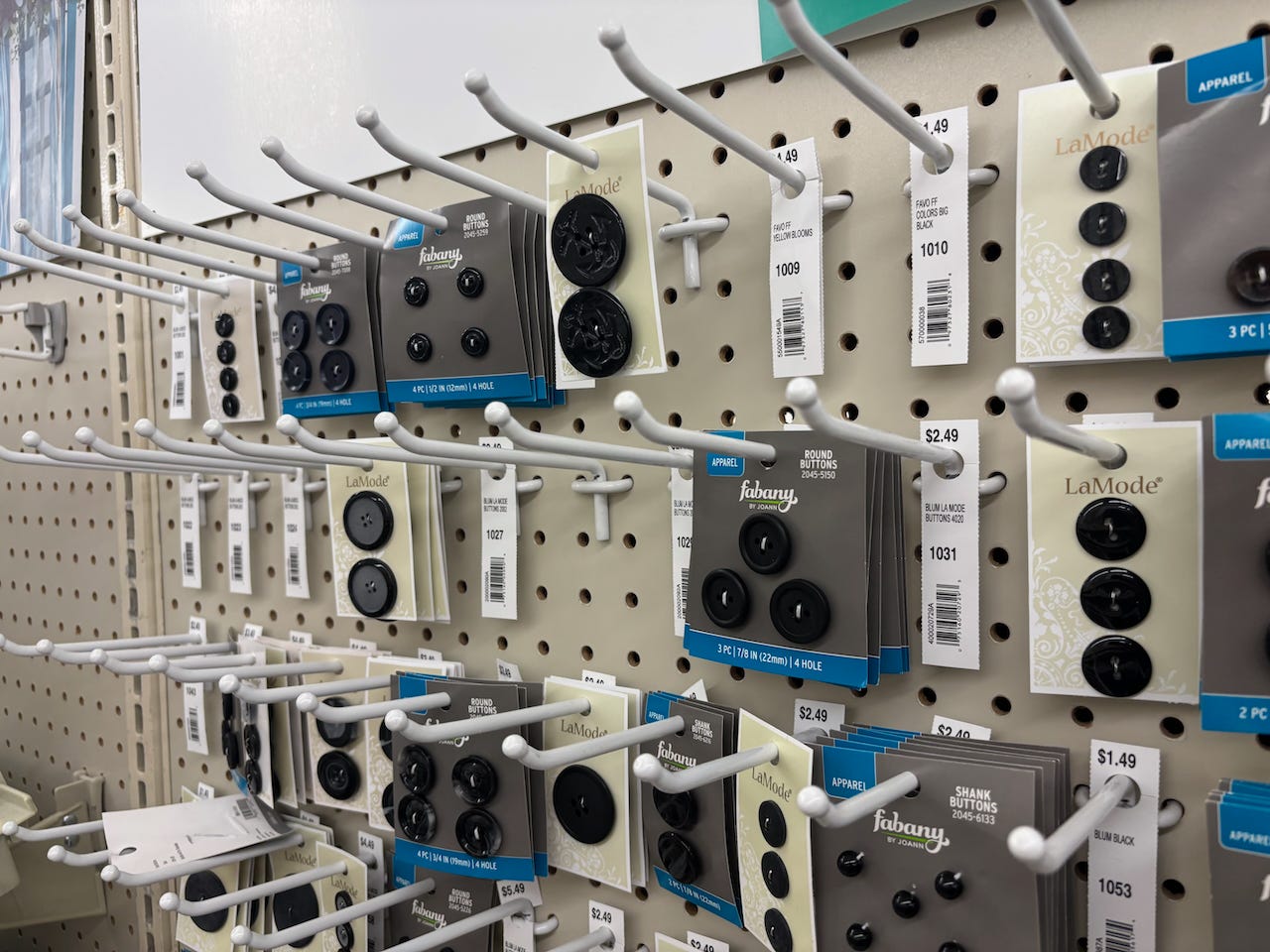
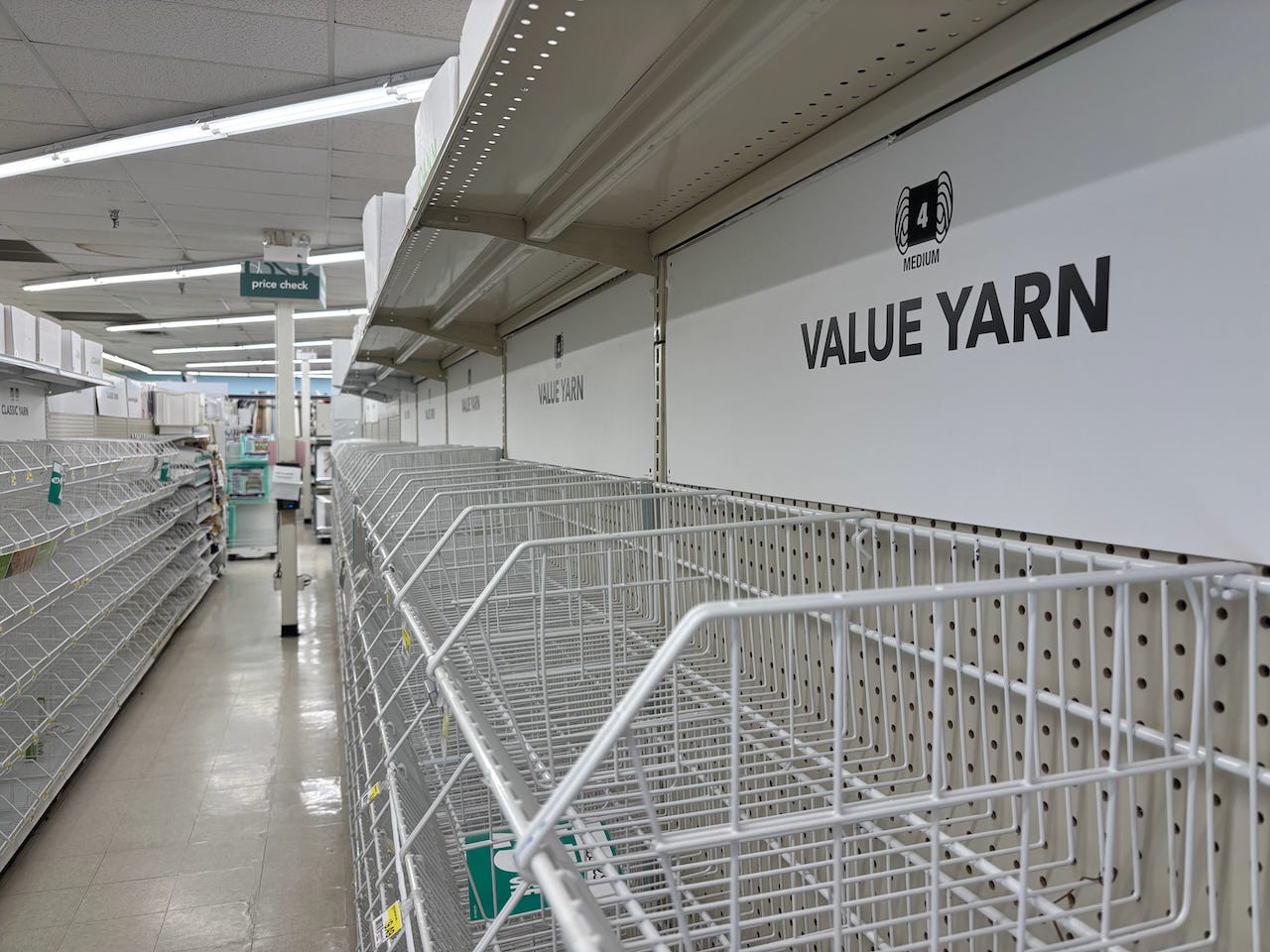
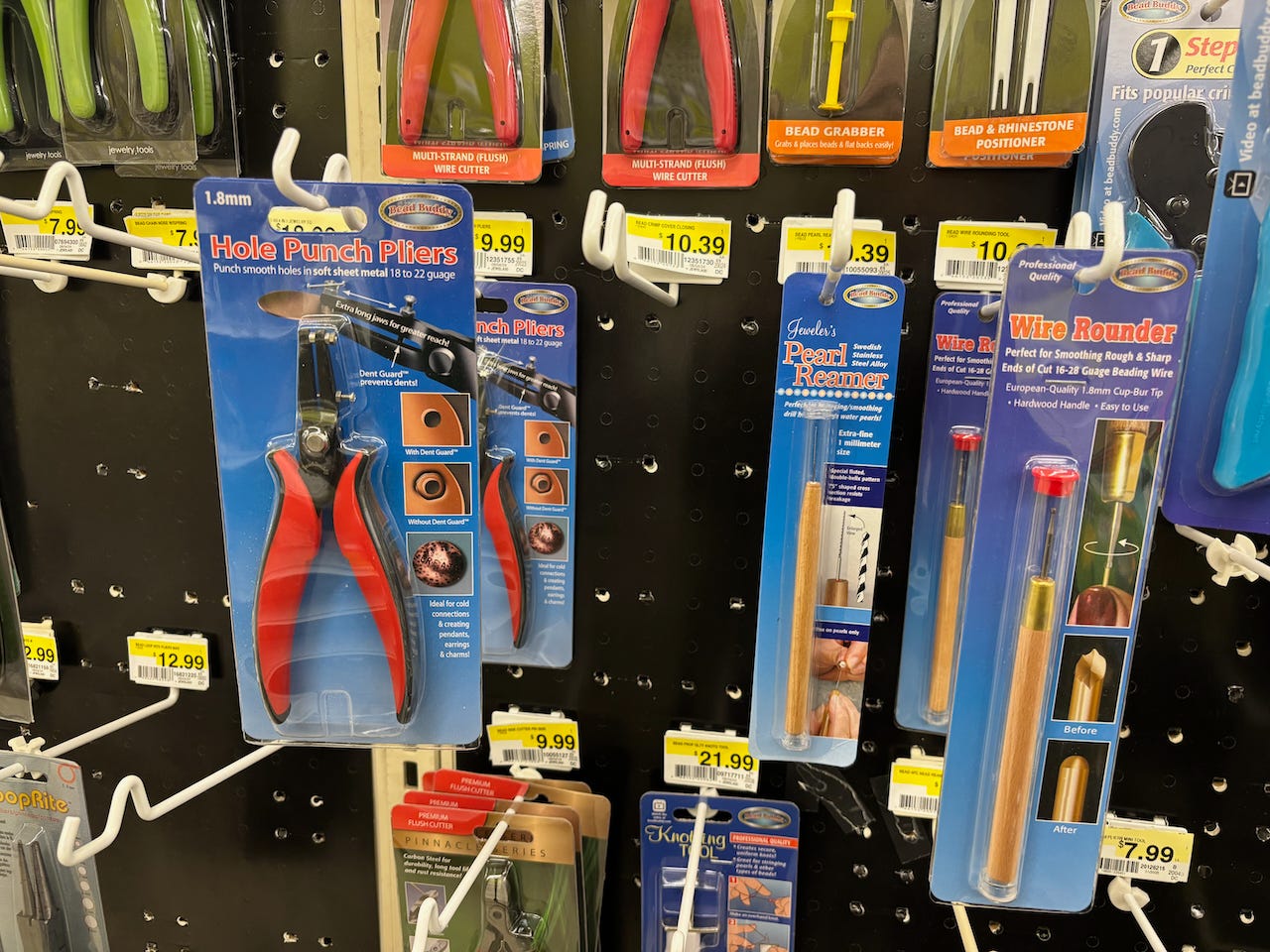

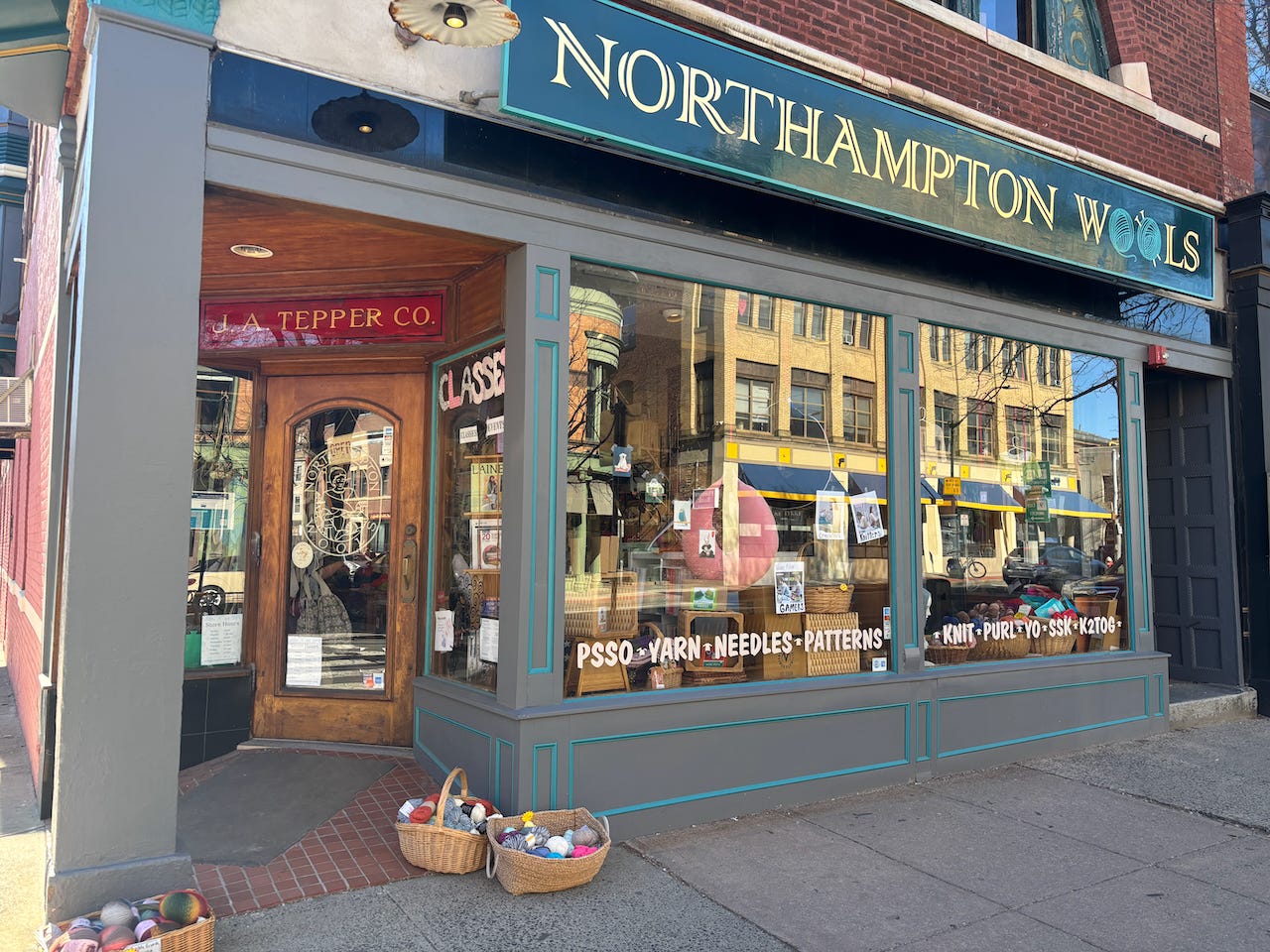
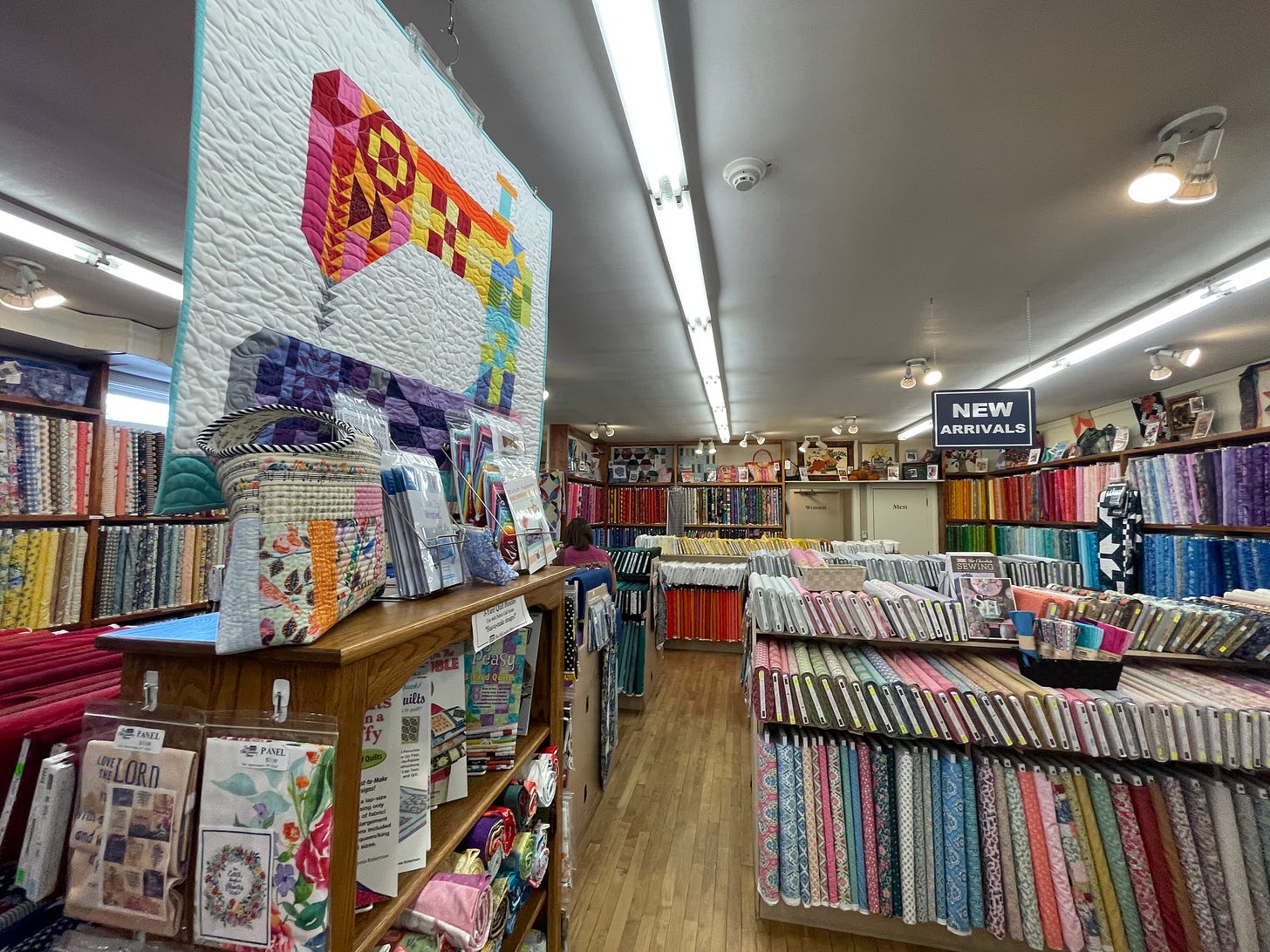
My sister and I spent so much time bored out of our minds in Jo-Ann Fabrics while my mom checked through pattern books and wayyyy too many fabric options for whatever.
Thanks for this interesting article, it brought back good memories. And I know many people who still sew. Hopefully the closing of this big chain store will be opportunities for lots more mom & pop stores.